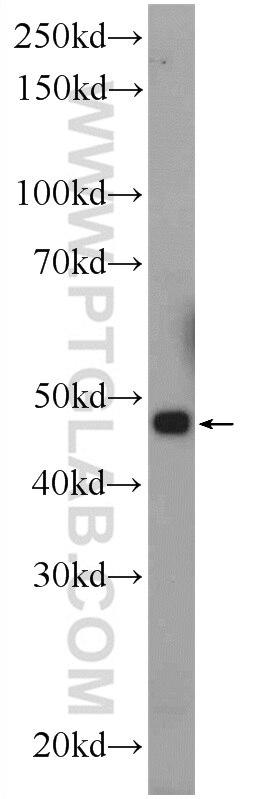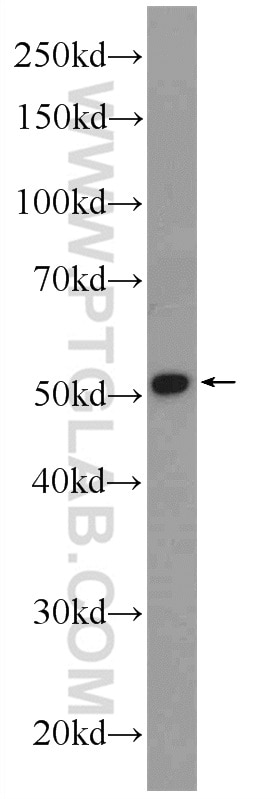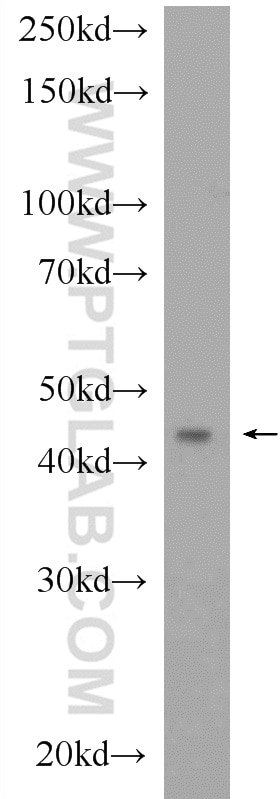CGRRF1 Polyklonaler Antikörper
CGRRF1 Polyklonal Antikörper für WB, ELISA
Wirt / Isotyp
Kaninchen / IgG
Getestete Reaktivität
human, Ratte
Anwendung
WB, ELISA
Konjugation
Unkonjugiert
Kat-Nr. : 16101-1-AP
Synonyme
Geprüfte Anwendungen
| Erfolgreiche Detektion in WB | Rattennierengewebe, L02-Zellen |
Empfohlene Verdünnung
| Anwendung | Verdünnung |
|---|---|
| Western Blot (WB) | WB : 1:500-1:1000 |
| It is recommended that this reagent should be titrated in each testing system to obtain optimal results. | |
| Sample-dependent, check data in validation data gallery | |
Veröffentlichte Anwendungen
| WB | See 1 publications below |
Produktinformation
16101-1-AP bindet in WB, ELISA CGRRF1 und zeigt Reaktivität mit human, Ratten
| Getestete Reaktivität | human, Ratte |
| In Publikationen genannte Reaktivität | human |
| Wirt / Isotyp | Kaninchen / IgG |
| Klonalität | Polyklonal |
| Typ | Antikörper |
| Immunogen | CGRRF1 fusion protein Ag8998 |
| Vollständiger Name | cell growth regulator with ring finger domain 1 |
| Berechnetes Molekulargewicht | 332 aa, 38 kDa |
| Beobachtetes Molekulargewicht | 42-48 kDa |
| GenBank-Zugangsnummer | BC015063 |
| Gene symbol | CGRRF1 |
| Gene ID (NCBI) | 10668 |
| Konjugation | Unkonjugiert |
| Form | Liquid |
| Reinigungsmethode | Antigen-Affinitätsreinigung |
| Lagerungspuffer | PBS with 0.02% sodium azide and 50% glycerol |
| Lagerungsbedingungen | Bei -20°C lagern. Nach dem Versand ein Jahr lang stabil Aliquotieren ist bei -20oC Lagerung nicht notwendig. 20ul Größen enthalten 0,1% BSA. |
Hintergrundinformationen
CGRRF1 is a growth suppressor and consists of a transmembrane domain and a RING-finger domain. It functions as a RING domain E3 ubiquitin ligase involved in endoplasmic reticulum-associated degradation. The expression of CGRRF1 is decreased in cancer tissues.(PMID: 31801577).
Protokolle
| PRODUKTSPEZIFISCHE PROTOKOLLE | |
|---|---|
| WB protocol for CGRRF1 antibody 16101-1-AP | Protokoll herunterladen |
| STANDARD-PROTOKOLLE | |
|---|---|
| Klicken Sie hier, um unsere Standardprotokolle anzuzeigen |




